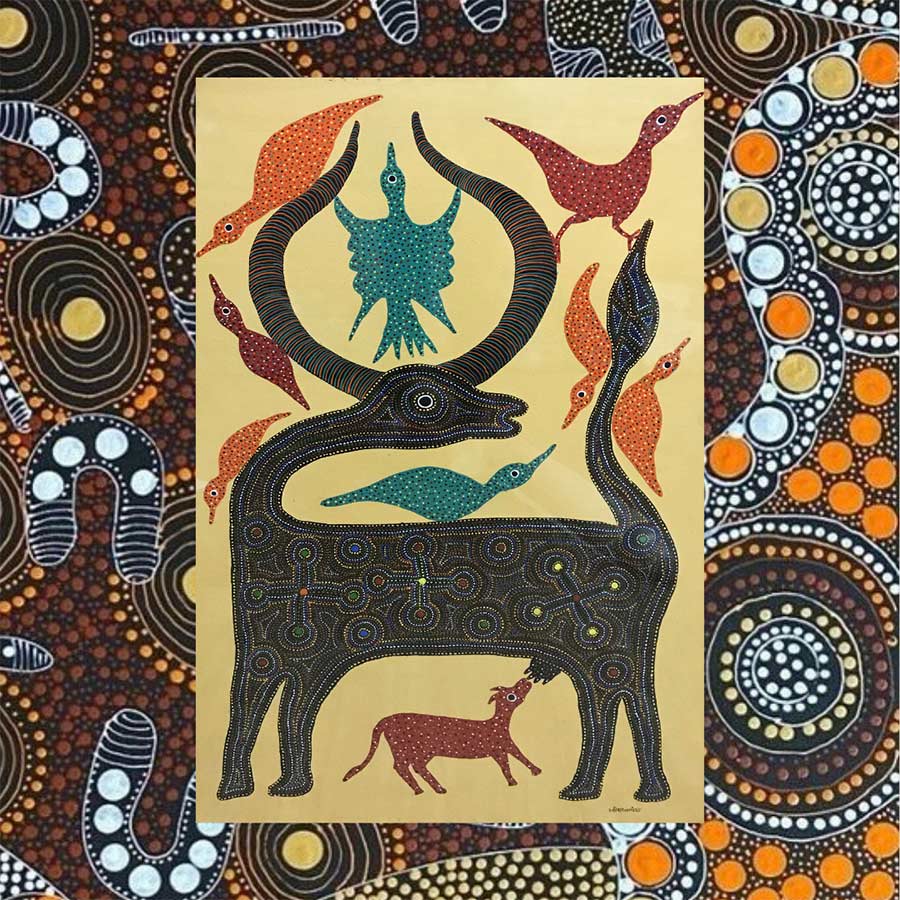

Art has been an integral part of human history, allowing cultures around the world to express their stories, beliefs, and identities. As we delve into the diverse realms of traditional art, we uncover fascinating similarities between seemingly distant cultures. The artistic expressions of the Indian Bhil tribe and Australian Aboriginals are one such revelation. These indigenous communities are geographically distant from one another, but their art forms are strikingly similar, reflecting a strong bond with nature, spirituality, and ancestry.
Bhil Art: An Old Tradition
The Bhil tribe, which is mainly found in the Indian states of Rajasthan, Gujarat, and Madhya Pradesh, has a long history of artistic creativity. The Bhil people's way of life, spiritual beliefs, and unwavering respect for nature are all intricately entwined with their artistic creations. Historically, Bhil art was used in a number of rituals and ceremonies as well as to adorn the walls of their homes. Bhil art frequently depicts animals, trees, gods, and tribal life while utilizing vibrant colors and intricate patterns.
Aboriginal Dot Art from Australia: Timeless Connections
On the other side of the world, the Aboriginal Australians, or Aboriginal peoples, have fostered a distinctive artistic tradition that has persisted for more than 60,000 years. Aboriginal art, characterized by its profound connection to Dreamtime, the mythical era when ancestral spirits shaped the world, serves as a visual representation of their sacred stories and cultural heritage. Their art primarily features intricate dot paintings, line work, and symbols, portraying animals, landscapes, and ancestral beings.
Shared Themes and Symbols
Despite their geographical separation, Bhil and Australian Aboriginal art converge in several thematic and symbolic elements. Both art forms predominantly depict flora, fauna, and animals of significance to the respective communities. These representations often carry deep spiritual and cultural meanings, signifying the interdependence between humans and the natural world.
The use of intricate patterns and lines is another striking resemblance. Bhil art incorporates geometric patterns, while Aboriginal art is renowned for its dot paintings and intricate line work. These designs, apart from adding aesthetic appeal, encode sacred stories, songs, and rituals passed down through generations.
Tools and Techniques
Another remarkable parallel lies in the techniques and tools employed by both artistic communities. The Bhil artists use natural pigments derived from minerals, plants, and stones, which imbue their creations with an earthy, rustic charm. Similarly, Aboriginal artists traditionally utilized natural pigments made from crushed ochre and charcoal.
Moreover, both art forms exhibit meticulous attention to detail, reflecting the artists' reverence for their subjects and the stories they represent.
In exploring the artistic expressions of the Bhil tribe of India and the Australian Aboriginals, we uncover a tapestry of shared themes, symbols, and techniques. These indigenous communities show a profound connection to their surroundings and the spiritual realms that direct their lives despite being separated by great distances.
The universality of their art reminds us of the inherent human desire to connect with our roots, preserve our heritage, and express the stories that define us. As we appreciate the depth and beauty of Bhil and Australian Aboriginal art, we are reminded of the common threads that bind humanity together, transcending borders and cultures.
Link to Bhil Art Paintings: https://www.artsoftheearthindia.in/category/bhil-art
